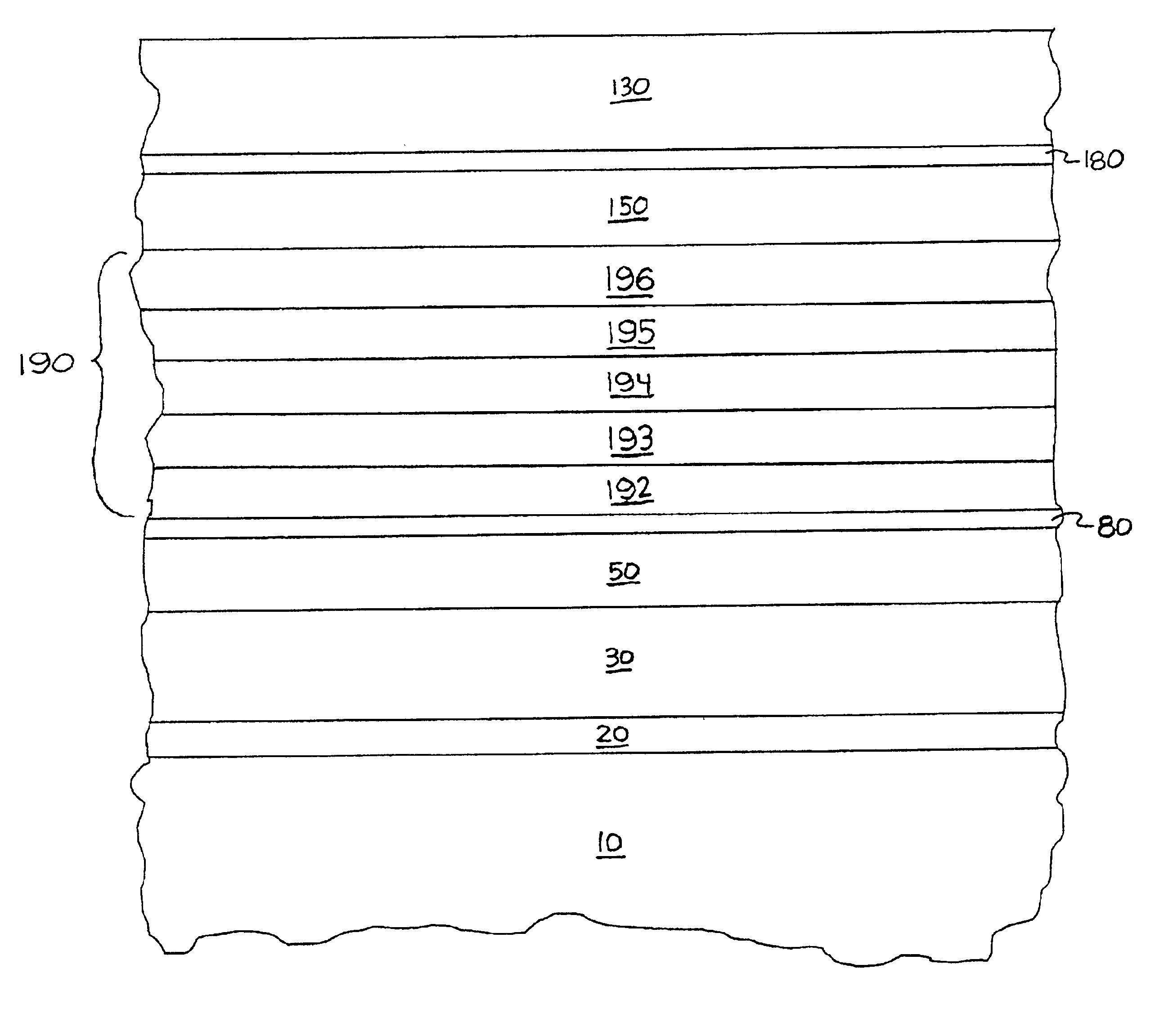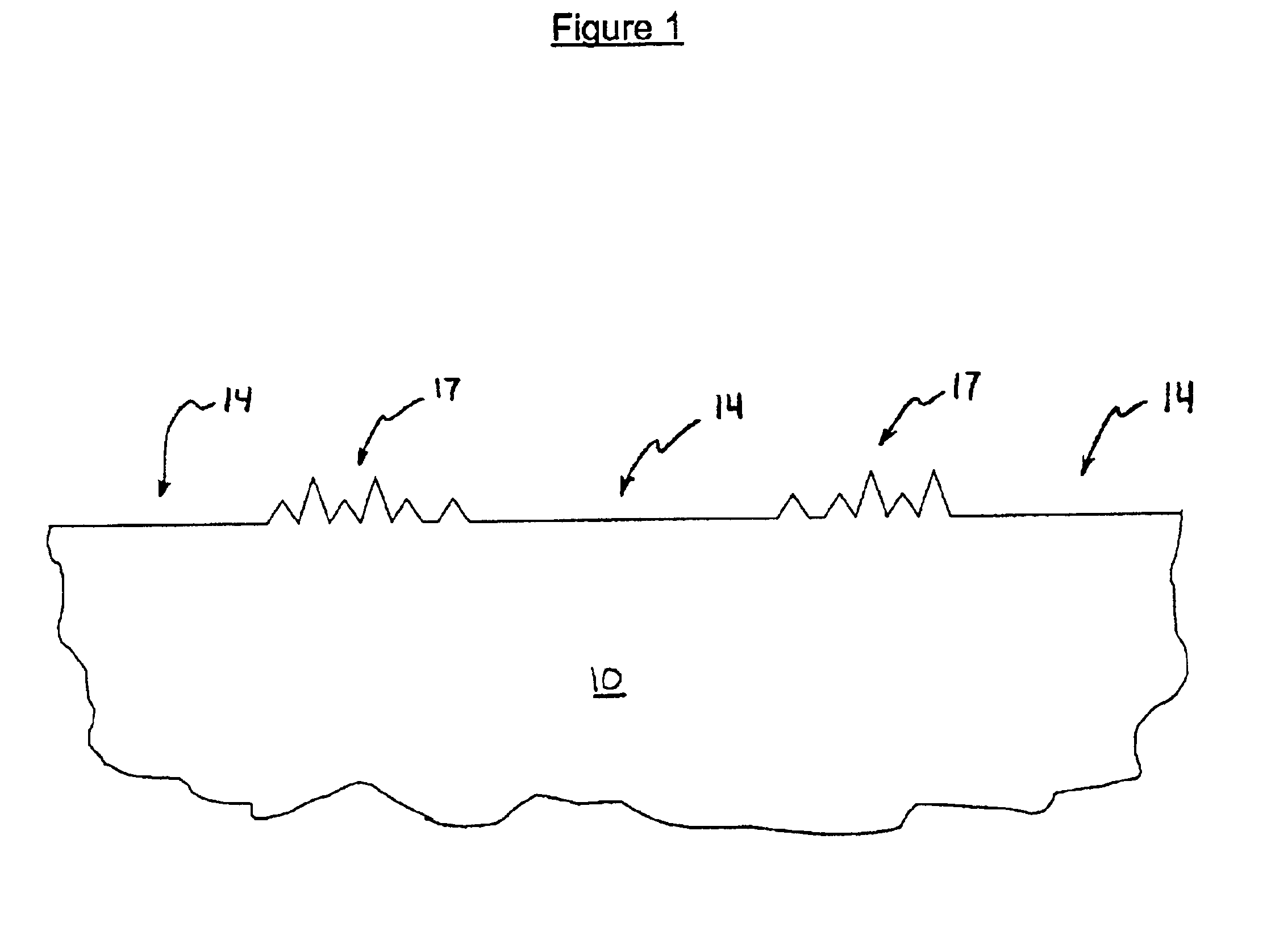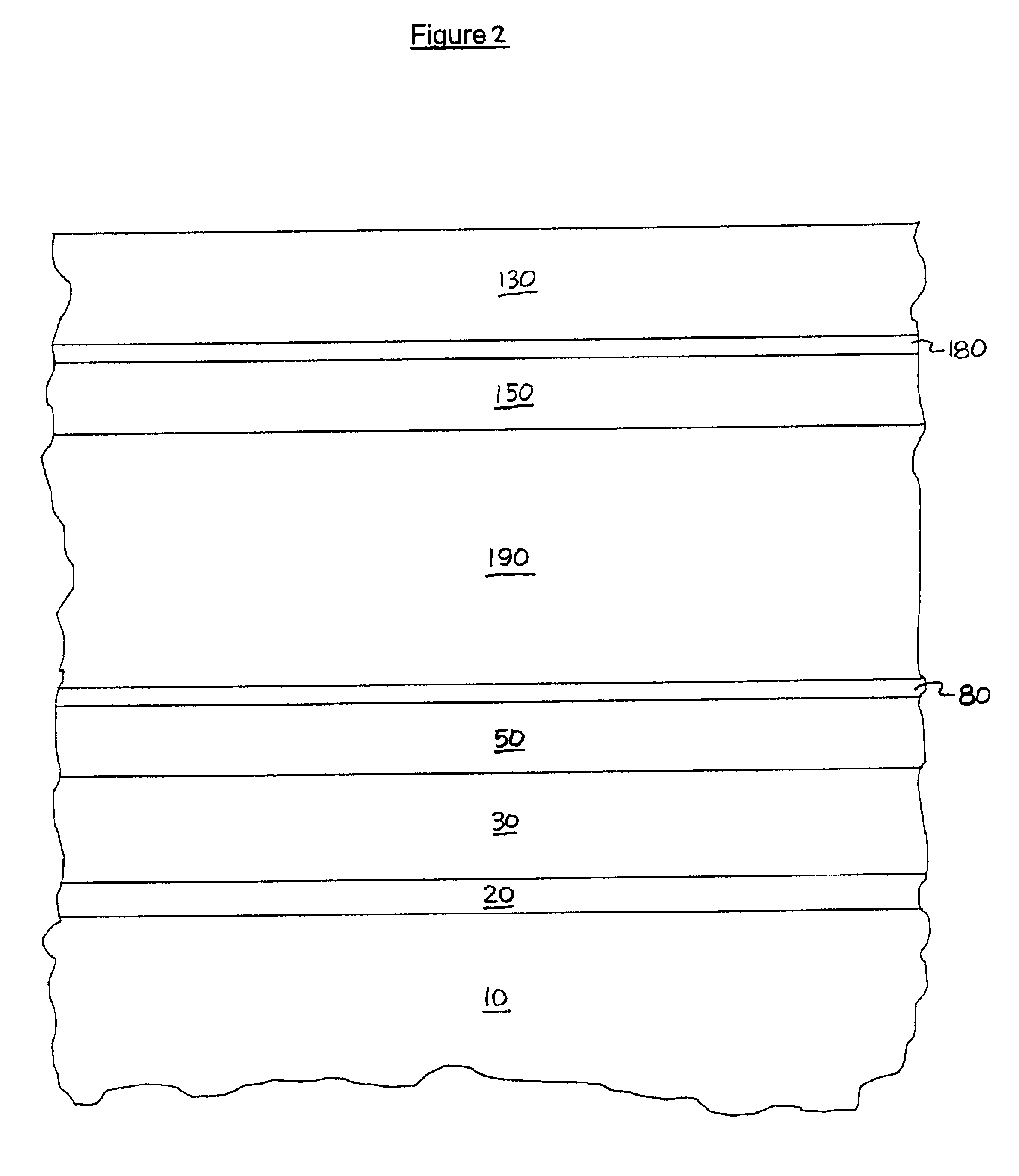Thin film coating having transparent base layer
a technology of thin film and base layer, applied in the field of thin film coating, can solve the problems of high tempering temperature, complicated procedure, and high cost, and achieve the effect of reducing the problem of corroded substrates and reducing the formation of haz
- Summary
- Abstract
- Description
- Claims
- Application Information
AI Technical Summary
Benefits of technology
Problems solved by technology
Method used
Image
Examples
example 1
[0092]Sheets of conventional soda lime glass (having a thickness of 3 mm) were obtained. Two batches of the glass sheets were coated with double-silver low-emissivity coatings. The coating on the first batch of glass sheets was provided with a silicon dioxide base layer in accordance with the present teaching. The first batch of coated glass is referred to herein as Sample A. The coating on the second batch of glass sheets was equivalent to the Sample A coating, except that the silicon dioxide base layer was omitted. The second batch of coated glass is referred to herein as Sample B. All of the Sample A and Sample B films were deposited by magnetron sputtering.
[0093]Sample A
[0094]As noted above, the coating applied to the first batch of sheets was provided with a silicon dioxide base layer. The base layer had a thickness of about 80 angstroms and was applied directly upon one of the major surfaces of the substrate. Directly upon the silicon dioxide base layer was applied a layer of ...
PUM
| Property | Measurement | Unit |
|---|---|---|
| thickness | aaaaa | aaaaa |
| thickness | aaaaa | aaaaa |
| thickness | aaaaa | aaaaa |
Abstract
Description
Claims
Application Information
 Login to View More
Login to View More - R&D
- Intellectual Property
- Life Sciences
- Materials
- Tech Scout
- Unparalleled Data Quality
- Higher Quality Content
- 60% Fewer Hallucinations
Browse by: Latest US Patents, China's latest patents, Technical Efficacy Thesaurus, Application Domain, Technology Topic, Popular Technical Reports.
© 2025 PatSnap. All rights reserved.Legal|Privacy policy|Modern Slavery Act Transparency Statement|Sitemap|About US| Contact US: help@patsnap.com



